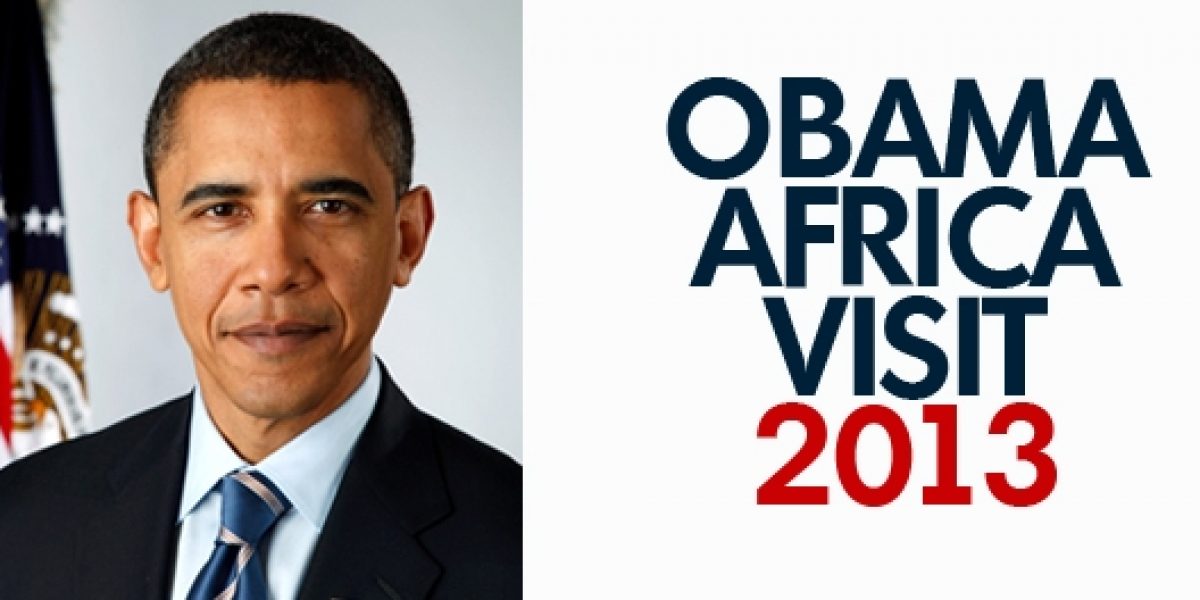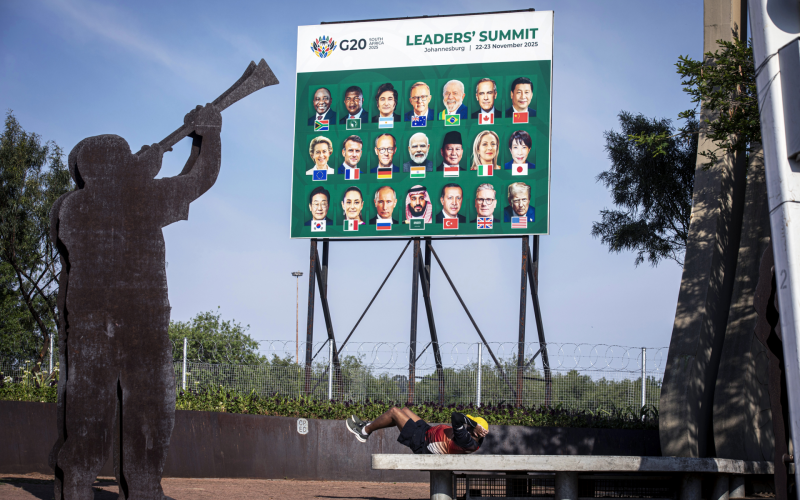Today it is a relationship that is crucial for both entities. President Barack Obama’s upcoming Africa visit (26 June to 3 July 2013) is yet another testament of how far America is willing to go to prove it.
The negative media images of Africa were an all too common occurrence in the US after the end of the Cold War. From its failed intervention in Somalia in 1993 to the 1995 US Security Strategy for sub-Saharan Africa published shortly after the Rwandan genocide stating that the US had ‘very little traditional strategic interest in Africa’, the 1990s was neither a memorable nor a promising time in the relationship. The ‘dark continent’ appeared set to turn into the forgotten continent in the eyes of most American political and business elites.
This slowly began to change after President Bill Clinton’s historic 1998 Africa tour to Botswana, Ghana, Rwanda, Senegal, South Africa and Uganda that led to breakthroughs such as the passing of the African Growth and Opportunity Act (AGOA). This new collaborative trading relationship continued in the 2000s under the leadership of George W Bush. USAID and other programmes began to be more focused on key African concerns. The US Congress established the Millennium Challenge Corporation (MCC) in 2004 to focus on smart foreign assistance to combat poverty through good policy, country ownership and results. This was combined with other efforts put forth by the US government including the US President’s Emergency Plan for AIDS Relief (PEPFAR), an initiative that helped save millions of lives across the continent.
Now almost 20 years after American soldiers were shown on CNN being dragged through the streets of Mogadishu, and almost 15 years since Clinton ordered a cruise missile attack on a pharmaceutical plant in Sudan in response to the bombing of American embassies in Kenya and Tanzania, President Barack Obama will once again be setting foot on the African continent. The visit to Senegal, South Africa and Tanzania from 26 June to 3 July 2013, will take place under a new premise compared to his 20-hour stopover in Ghana in 2009.
Obama writes in the opening of the new Africa strategy launched in June 2012, ‘As we look toward the future, it is clear that Africa is more important than ever to the security and prosperity of the international community, and to the United States in particular.’ And he seems to be putting his money where his mouth is.
There has been, and will continue to be an emphasis on peace and security when it comes to US-Africa relations, with a strong emphasis on combating al-Qaeda on the continent. This has led to some criticism, from the African perspective, of an imperialist global power using military and intelligence operations to gain access to strategic resources and territories and violating the sovereignty of African countries. Yet, despite those and other concerns about the role of African militaries in coups and the suppression of their citizens, many countries are now more stable and require defence capabilities that ensure a secure, prosperous and friendly reception for foreign investors. This has led to the establishment of ‘bases’ or lily pads and the use of drones to gather much needed intelligence for African militaries, which leaves many people concerned. The US is providing support to African Union (AU) and United Nations (UN) peacekeeping missions, supporting crucial training in maritime security and providing assistance in combating terrorist organisations, amongst other activities. These US African Command (AFRICOM) and African military partnerships demonstrate America’s willingness to address African security challenges that ultimately help pave the way for their ‘developmental’ roots to grow and strengthen.
Washington is rightfully trying to change the negative perception that its involvement is purely about fighting terrorism. In fact, US-Africa relations are much more than this, which Obama’s trip will highlight.
Emphasis on trade
The purpose of Obama’s historic visit is to expand economic growth, investment and trade; strengthen democratic institutions; and, invest in the next generation of African leaders.
The economic aspect is an obvious and necessary component with more than one billion consumers living on the continent. Obama emphasised growing America’s exports during his 2010 State of the Union address by launching his National Export Initiative. The results have been positive with record levels of goods exported in 2012 to the major emerging markets of Brazil ($43.7 billion), China ($110.6 billion), India ($22.3 billion), Russia ($10.7 billion) and South Africa ($7.6 billion). In fact US goods trade with sub-Saharan Africa has tripled over the past decade, but America is still seen as late to the game when it comes to economic opportunities in Africa. This is because of the speed at which China surpassed America as the continent’s largest trading partner and how fast the gap continues to widen.
US and China trade with Africa
| Year | 2000 | 2010 | 2011 | 2012 |
| USA | US$38.6bn | US$113.3bn | $125.8bn | $99.6bn |
| China | US$10.6bn | US$126.9bn | $166.3bn | $198.5bn |
Sources: US Census Bureau, Foreign Trade Data and Chinese Ministry of Commerce.
The US has China to thank for years of substantial investment into the continent and much needed infrastructure development enabling many African countries to achieve nearly double-digit GDP growth on a year-on-year basis. Washington is now looking to take advantage of this growth and launched its Doing Business in Africa campaign, as well as other country specific initiatives like the US-South Africa Business Partnership Summit and the US-South Africa Business Council. Although these programmes are welcomed by Africans, most (including South Africa) wonder if the US Congress will extend AGOA, the trade agreement that allows many of their exports to enter the US ‘duty free’. The agreement expires in 2015.
Interest vs Principles
This leads to one of the main criticisms of US involvement in Africa, the view of America being a ‘fair weather’ friend. This perception is often tied to criticism around its focus on ‘strengthening democratic institutions’ in its bilateral engagement with the continent. Favouring certain African countries over others had a bearing on Obama’s meeting with four specific African heads of state at the White House on 28 March 2013. The meeting included President Macky Sall of Senegal, President Ernest Bai Koroma of Sierra Leone, President Joyce Banda of Malawi, and Prime Minister José Maria Pereira Neves of Cape Verde. The symbolic intent was clear; the US president prefers to engage with nations and their leaders who uphold democratic principles such as the rule of law.
How to balance the two, interests versus principles, is the real issue and is something that America still has to decide on. Will it support leaders who have questionable democratic credentials, but who have also managed to bring a substantial amount of wealth and prosperity to their people?
The promotion of human rights and democracy in Africa could be part of the reason behind Obama’s choice of countries on this visit. He starts in the paragon of democracy, Senegal and then proceeds to Tanzania which recently launched its draft constitution. A trip to Senegal’s famed former slave centre on Goree Island will be an important component of Obama’s Africa tour like it was for Bill Clinton in 1998, and his wife Hillary, who visited as Secretary of State in 2012. Obama will also visit Robben Island off the coast of Cape Town as well.
Obama’s Africa visit will also emphasise America’s developmental programmes such as its work on HIV/AIDS and food security. Tanzania has benefited greatly in both areas. In terms of the latter, America’s ‘Feed the Future Initiative’ supports the East African country’s agricultural sector to grow enough food to sustainably feed its people. Additionally, Tanzania, along with El Salvador, Ghana and the Philippines, was one of the first countries selected in late 2010 as part of America’s Partnership for Growth (PFG) run by the Millennium Challenge Corporation (MCC) and other US Government agencies to support a select group of high-performing developing countries to accelerate and sustain broad-based growth of their economies.
Energy
Another vital issue to Africa is energy poverty. The Obama Administration understands that a lack of electricity undermines economic development.
Energy security needs to be one of the focus areas of the president’s trip and for the future of US-Africa relations.
The US has already started taking steps in the right direction with countries like South Africa. In 2012, a two billion dollar agreement was signed between the US Export-Import Bank and South Africa’s Industrial Development Corporation (IDC) to provide credit guarantees for the development of the renewable energy sector. America’s Overseas Private Investment Corporation (OPIC), which mobilises private capital to help solve development challenges and thereby advances American foreign policy, further supports US companies to develop renewable energy programmes in South Africa. Another project of the OPIC was a US$310 million dollar loan given to OrPower in 2011 to expand its geothermal power plant in Kenya. This enabled the plant to double its operating capacity and to deliver at least 5% of Kenya’s total power demand.
America is also interested in the possible one trillion rand (US$100 billion) nuclear tender to assist in the expansion of South Africa’s nuclear energy capacity to meet its high electricity demand. A South African nuclear delegation will visit America in July 2013 to hold discussions with nuclear specialists Westinghouse and General Electric. Several Chinese corporations like the State Nuclear Power Technology Corporation (SNPTC) have also offered South Africa its latest design, the CAP1400. It is based on the technology of Westinghouse’s AP1000 with the SNPTC being a beneficiary of technology transfer from the US company. Russia has also expressed an interest.
Youth employment
Africa has a youthful population, but most young people across the continent are unemployed and lack the necessary skills to be employable in modernising economies. A large part of Obama’s visit is to invest and support the next generation of African leaders to assist in addressing this growing and serious problem. In 2010, the Obama Administration launched the Young African Leaders Initiative (YALI) to ‘develop a prestigious network of leaders across critical sectors, cement stronger ties to the United States, and offer follow-on leadership opportunities in Africa, with the goal of strengthening democratic institutions and spurring economic growth.’
More specifically, America has run 160 exchange fellowships for young African leaders under the age of 35 and awarded over US$2 million in grants. The latter includes US$750,000 in small grants to alumni groups supporting youth development in Africa and two USAID grants totaling US$1.3 million to support the core principles of YALI by investing in young leaders via professional training, access to mentorship, and networking opportunities throughout the continent. US Embassies across sub-Saharan Africa have also conducted over 2 000 youth programmes and established Embassy Youth Councils in more than 20 African countries.
Conclusion
Obama needs to prove to Africa that the US is in this partnership for the long haul. Many of its flagship African projects like ‘Feed the Future’ and YALI are notable long-term efforts that will strengthen partnerships in crucial areas such as agriculture and energy, as well as create relationships between future American and African political and economic leaders. However, these important initiatives need to be supported by a Congress that also extends AGOA as soon as possible and for as long as possible.
While Obama’s Africa tour shows the importance that America places on Africa, it needs to take further steps to strengthen its relations with the whole continent and in numerous fields, namely people-to-people, politics, economics, and security. After all, a prosperous Africa is also good for the US.








